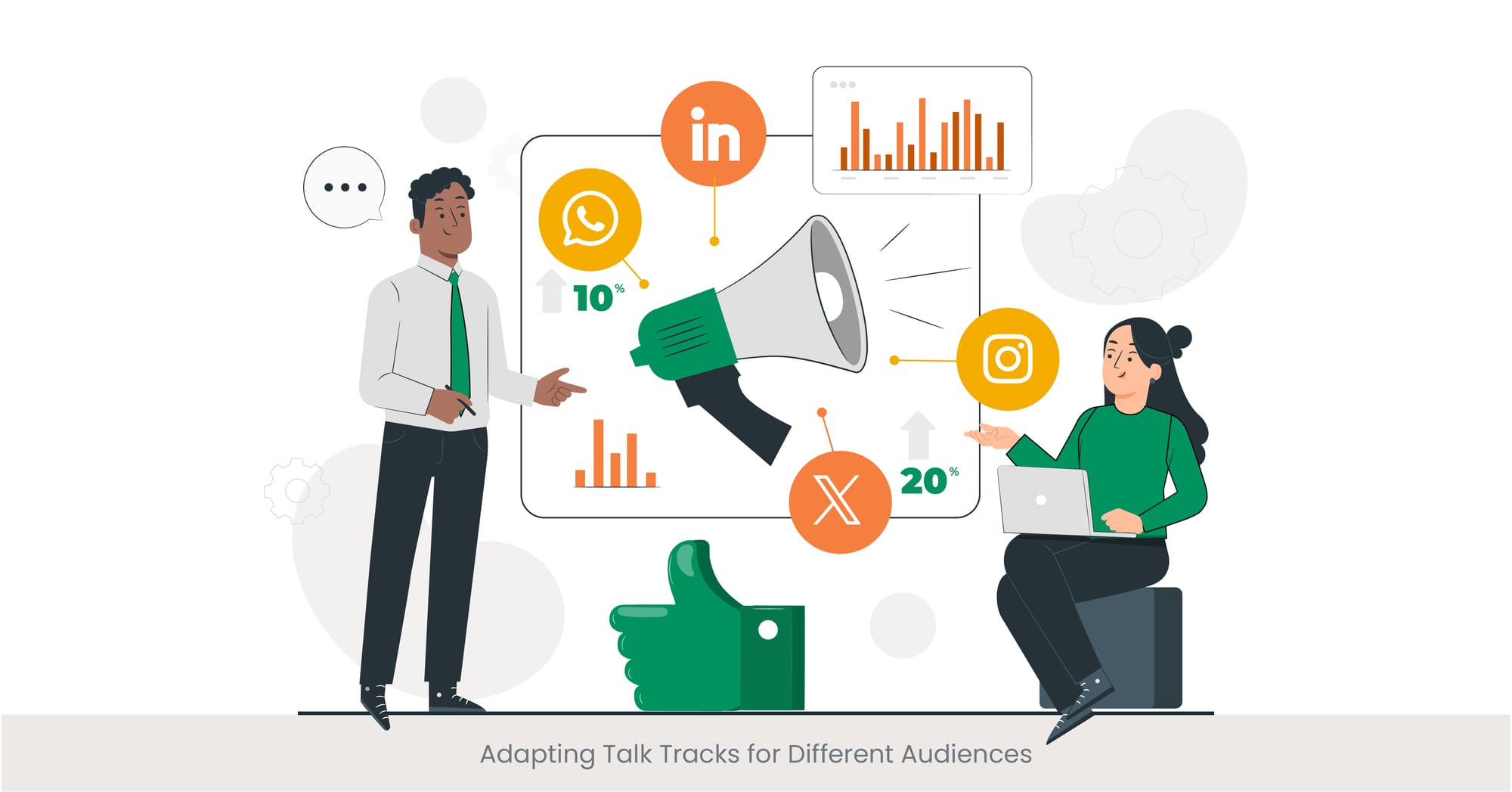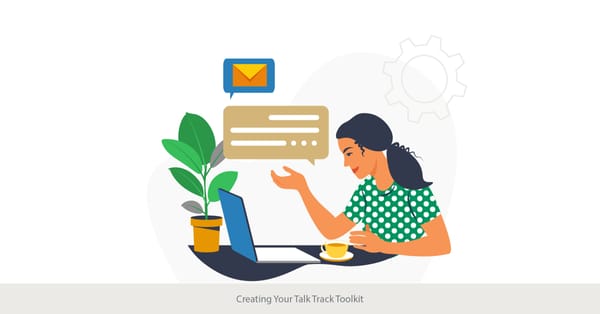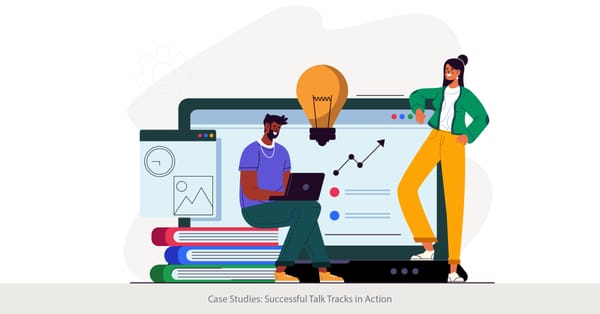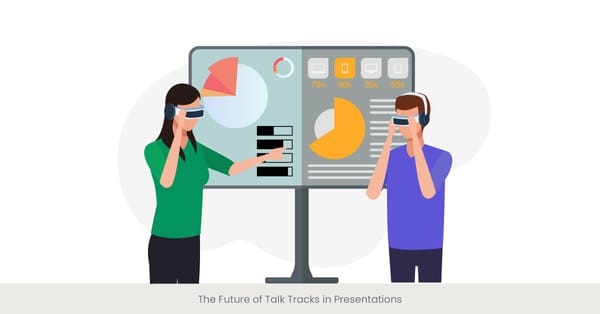
Audience Segmentation: Understanding Your Listeners

Engaging with Diversity: The Power of Audience Segmentation
Introduction to Audience Segmentation
Understanding your listeners through audience segmentation is the foundational step in adapting your talk tracks effectively. This approach involves categorizing the audience into distinct groups based on specific criteria such as age, profession, cultural background, or interests. By identifying these segments, speakers can tailor their messages to resonate more deeply and meet the specific needs and expectations of each group.
Background on Audience Segmentation
The concept of audience segmentation is not new and has its roots in marketing and psychology. It allows for a more organized approach to communication by addressing the unique characteristics that influence how different groups perceive and process information. Effective segmentation can lead to more engaging and impactful communication, as the speaker can use targeted messages that appeal directly to each segment.
Real-World Application and Examples
For instance, a tech company may present a new product differently to a group of software engineers versus a group of potential investors. While the engineers might appreciate more technical details and coding specifics, investors might be more interested in the product’s market potential and ROI. Similarly, in educational settings, instructors may vary their language and examples when teaching children versus adults to optimize learning outcomes. Engaging the audience's attention through tailored communication strategies, including the strategic use of voice modulation and pauses, is crucial for capturing and maintaining interest, making your message more impactful.
Validating with Research and Statistics
Research underscores the effectiveness of audience segmentation. According to a study by the Journal of Marketing, tailored advertisements that accounted for audience segments increased engagement by 15% compared to non-segmented approaches. Furthermore, demographic-specific data can often highlight preferences and trends that are crucial for fine-tuning communication strategies. Such insights are not just beneficial; they are necessary for anyone looking to enhance their influence and effectiveness through tailored communication.
Leveraging Audience Insights for Enhancing Public Speaking Skills
Presenters' talk track development is a continuous process that evolves with each presentation. By using audience insights and feedback, speakers can refine their content, tone, and delivery style for future talks. Developing a flexible talk track allows for more meaningful interactions, leading to improved audience retention and satisfaction over time.
Read our blogs to learn more about presentation tips and trends.
Cultural Considerations in Talk Track Design

Navigating the Cultural Landscape: Enhancing Communication Effectiveness
Introduction to Cultural Considerations
Cultural considerations play a crucial role in designing effective talk tracks. Recognizing and respecting cultural differences can significantly influence the reception of your message and the overall success of your communication efforts. This aspect of talk track adaptation involves understanding cultural norms, values, and communication styles that vary from one group to another, ensuring that messages are not only heard but are also culturally resonant.
Background on Cultural Adaptation
The adaptation of talk tracks to suit different cultural backgrounds involves more than just translating words; it encompasses a deeper understanding of linguistic nuances, social norms, and behavioral expectations. Historically, successful speakers and organizations have noted that cultural competence can enhance audience engagement and prevent potential misunderstandings that could alienate listeners or dilute the message's impact.
Feedback Mechanisms for Tailoring Content
Interactive talk tracks engage the audience directly, creating a dynamic feedback loop that encourages participation. These tracks utilize interactive elements like polls, Q&A sessions, and live comments to keep the audience involved. As a result, presenters can adjust their message based on real-time feedback, making the content more engaging and relevant.
Real-World Application and Examples
An excellent example of cultural consideration in action is global marketing campaigns. Companies like Coca-Cola and Nike customize their advertisements to reflect the cultural specifics of each market they serve. For instance, Coca-Cola’s "Open Happiness" campaign was adapted with significant cultural variations in imagery, slogans, and themes to suit local tastes and sentiments around the world, thereby enhancing consumer connection and brand loyalty.
Validating with Research and Statistics
Studies have shown that culturally adapted communication strategies are more effective. According to a survey by Harvard Business Review, campaigns that considered cultural influences saw a 70% increase in audience engagement compared to those that did not. Additionally, feedback from multicultural audience segments often highlights the importance of cultural sensitivity, with 85% of respondents stating that personalized communication based on cultural understanding significantly affects their perception of a speaker or brand.
Adjusting Your Talk Track for Different Settings
Effective talk tracks for events vary depending on the setting, audience demographics, and objectives. Tailoring your talk to the event context ensures that your message resonates with attendees. Whether it’s a corporate conference or a casual seminar, an effective talk track is adapted to maximize engagement, relevance, and clarity throughout the event.
Explore more case studies to see our success in action.
Adapting Your Language and Voice Modulation

The Power of Tone: Adjusting Language for Audience Impact
Adapting your language and tone is essential for effective communication, especially when addressing diverse audiences. The choice of words, the tone of voice, and the overall delivery style can greatly influence how your message is perceived and received. Tailoring these elements to fit the audience's expectations and comfort levels can enhance understanding and engagement, making your communication efforts more effective and impactful.
Historical Context and Evolution of Language Adaptation
The adaptation of language and tone has roots in classical rhetoric, where orators were trained to adjust their speech according to the situation and audience. This practice has evolved into a fundamental aspect of modern communication across various fields, including public speaking, education, and leadership. Understanding the nuances of language and how it affects people emotionally and cognitively is crucial for any speaker wishing to make an impact.
Language Adaptation in Practice
Consider a CEO discussing a company's financial results. To the board, her tone might be formal and data-driven, peppered with industry jargon. However, when addressing employees about the same results, she might use a more conversational tone, simplifying the financial terms and focusing more on what the results mean for team members personally. This strategic adjustment in language and tone helps ensure that the message is not only delivered but also resonates well with different groups.
Research-Backed Strategies
Studies from sources like the Journal of Applied Psychology suggest that audience-specific language adaptation can lead to a 40% increase in audience engagement and retention. Additionally, linguistic experts argue that effective communication requires not only adjusting vocabulary but also aligning tone and tempo with the emotional and intellectual state of the audience. Incorporating these strategies into your speech can significantly enhance the clarity and persuasiveness of your message.
Personalization Techniques for Engagement

Crafting Connection: Personalization in Public Speaking
Personalization techniques in public speaking are key to forging a genuine connection with your audience. This involves more than just using a person’s name; it’s about tailoring your message to meet the interests, needs, and emotions of your audience members. By making your talk track resonate personally with listeners, you can increase engagement and ensure that your message is more memorable. Enhancing public speaking skills, particularly through voice modulation and pauses, plays a crucial role in this process. These techniques allow speakers to convey messages clearly, create interest, and connect emotionally with different audience segments, thereby personalizing the experience for each listener.
The Evolution of Personalization in Communication
The concept of personalization has transformed significantly with technological advancements. Historically, orators had to rely on their intuition and immediate feedback from the audience to personalize their messages. Today, speakers can use data analytics and audience insights to pre-emptively tailor their messages, allowing for a more targeted and effective approach to engaging individual listeners.
Demonstrating Personalization in Real-World Scenarios
A notable example of personalization can be seen in political campaigning, where candidates adjust their messages based on the specific concerns and demographics of different regions. For instance, a candidate might focus on urban development issues when speaking in a city, while shifting the emphasis to agricultural policies in rural areas. This level of personalization helps in addressing the specific interests and concerns of different audience segments, thereby increasing relevance and resonance.
Validation Through Studies and Data
According to a study by the University of Stanford, personalized messages are 50% more likely to be received positively by audiences than generic messages. This statistic underscores the importance of personalization in enhancing the effectiveness of communication. Implementing personalization techniques based on audience analysis not only shows respect for the audience’s unique perspectives but also significantly boosts the impact of the communication.
Technical vs. Non-Technical Audiences: Bridging the Gap

Tailoring Complexity: Communicating Across Expertise Levels
Bridging the gap between technical and non-technical audiences is a critical skill in effective communication. It involves simplifying complex concepts without diluting the content's essence and ensuring that the information is accessible to all audience members, regardless of their background in the subject matter. This balance requires a keen understanding of both the material and the audience’s level of familiarity with it.
The Importance of Audience Analysis in Technical Communication
Historically, the challenge of addressing both technical and non-technical audiences has been evident in fields like science and technology. Communicators have had to develop strategies to convey detailed and often complex information in a manner that is comprehensible to a broader audience. This involves not only choosing the right words but also structuring the information in a logical, easy-to-follow manner.
Real-World Examples of Effective Bridging
One illustrative example is the presentation of software updates. Developers, who understand the code and its intricacies, might appreciate deep technical details. However, end users are typically more concerned with what the update means for their user experience and less with the technical specifics. Successful communication in such scenarios involves emphasizing benefits over features to non-technical users while providing deeper technical insights in forums where detailed knowledge is valued.
Supported by Research and Feedback
Research from MIT on communication barriers between technical experts and general audiences highlights strategies like using analogies and avoiding jargon to enhance understanding. Feedback mechanisms are crucial here, as they allow the speaker to gauge comprehension and adjust the talk track in real-time. Implementing these strategies has been shown to improve audience engagement and information retention significantly, making technical presentations more effective and impactful.
The Role of Feedback in Dynamic Communication
Digital presentation talk tracks involve using technology to enhance the delivery of your message. Integrating tools like slides, videos, and interactive elements, they allow speakers to convey complex information effectively. Real-time feedback during digital presentations enables a more responsive and adaptive communication style, ensuring audience engagement.
Get in touch with INK PPT for custom presentation solutions.
Feedback Mechanisms for Tailoring Content

The Role of Feedback in Dynamic Communication
Feedback mechanisms are essential for dynamically tailoring content to meet audience needs during a presentation or speech, acting as a controlling source by providing evaluative or corrective information to the speaker. They involve actively soliciting and incorporating feedback from the audience to adjust the message, ensuring it remains relevant and engaging throughout the delivery. Effective feedback helps identify areas that need more clarification, assesses the emotional resonance of the content, and gauges overall audience engagement. Gathering both corrective information and evaluative or corrective information is crucial for refining the delivery and content of the presentation.
Historical Perspective on Feedback in Public Speaking
The use of feedback in communication is not new. Ancient rhetoricians considered audience response to be a critical component of effective speech-making, using it to refine their arguments and delivery in real-time. In the modern era, technology has enhanced the ability to gather and analyze audience feedback through tools like live polls, Q&A sessions, and feedback forms, allowing for more sophisticated and responsive communication strategies.
Case Studies Demonstrating Feedback Utility
In educational settings, instructors often use instant feedback tools like clickers or mobile apps to assess student understanding and engagement during lectures. This immediate feedback, directed back to the original or controlling source, allows them to adjust the pace of the lecture or revisit concepts that are not well understood. Similarly, in corporate presentations, live feedback can help presenters identify the most engaging parts of their talk, adapting on the fly to focus on what works best.
Empirical Evidence Supporting Feedback Use
Studies show that incorporating feedback mechanisms can lead to a 30% increase in audience retention and satisfaction. These findings highlight the critical role of feedback in not only adjusting content but also in making communication a two-way interaction that values the audience’s input and adapts to their needs in real-time.
The Role of Demographics in Content Adaptation

Demographics as a Lens for Content Customization
Understanding the demographics of your audience is essential for effective content adaptation. This includes considering factors like age, gender, education level, and socio-economic status, which can significantly influence how your message is crafted and delivered. Tailoring your talk track to align with these demographic factors ensures that your content resonates more deeply with each segment of your audience, enhancing both relevance and engagement.
Historical Insights into Demographic Considerations
The practice of adapting content based on demographic data has roots in traditional marketing and broadcasting, where audience segmentation by demographics was crucial for targeting specific consumer groups effectively. In public speaking and presentations, similar principles apply. Knowledge of the audience’s demographic profile helps in designing a talk track that speaks directly to their experiences, expectations, and needs.
Demonstrating Demographic Adaptation in Practice
A classic example of demographic adaptation can be seen in how different age groups are addressed. A presentation on digital technology will differ markedly between a group of tech-savvy teenagers and retirees who may be less familiar with the latest gadgets. For the teenagers, the presenter might focus on emerging trends and advanced features, using a casual tone and contemporary slang. For retirees, the same topic might be approached with more basic explanations and a focus on practical benefits, delivered in a formal tone.
Backed by Data and Expert Opinions
Research from demographic studies suggests that messages tailored to specific demographic groups can increase the effectiveness of communication by up to 70%. This is supported by numerous case studies, including those conducted by universities and professional communication bodies, which emphasize the importance of demographic awareness in crafting messages that not only inform but also engage and persuade.
Adjusting Your Talk Track for Different Settings

Context Matters: Environmental Influence on Communication
Adjusting your talk track for different settings involves modifying your content and delivery style to suit the context in which you are speaking. Whether it's a formal business conference, a casual workshop, or a virtual webinar, each setting demands a different approach to how you communicate your message. Understanding the nuances of each environment allows you to optimize engagement and ensure your message is appropriate and effective.
The Evolution of Setting-Specific Communication
Historically, the adaptation of communication styles to different settings has been an integral part of rhetoric and public speaking. From the stately orations of ancient philosophers in public forums to modern-day keynote speeches at technology expos, the effective communicator has always known to consider the setting as a critical factor in talk track design.
Real-World Examples of Effective Environmental Adaptation
Consider a healthcare professional discussing sensitive health issues. In a large public seminar, the language might be more general, focusing on common concerns and maintaining a professional but approachable tone. In contrast, the same professional in a small support group setting might use a more empathetic tone, personalize the content more deeply, and allow for greater interaction. These adjustments ensure that the communication is not only heard but also felt and understood by the audience.
Research Highlights the Importance of Adaptation
Studies highlight that adapting to different settings can improve communication effectiveness by up to 50%. For instance, adapting the level of technical jargon used in a corporate board meeting versus a public info session can significantly alter audience comprehension and engagement levels. This adaptation is not just about altering content but also involves adjusting the pace, volume, and even the visual aids used to better suit the setting and audience expectations.
Ready to take your presentations to the next level? Contact us now!
Inclusive Language: Respecting Diversity

Embracing Diversity through Inclusive Language
Inclusive language is an essential component of modern communication, aiming to respect and acknowledge the diversity of audiences. It involves choosing words that avoid biases, stereotypes, or exclusions based on factors like race, gender, or disability. By using inclusive language, speakers can create a welcoming and respectful atmosphere that encourages participation and reduces the likelihood of alienating segments of the audience.
The Evolution of Inclusivity in Communication
The shift towards more inclusive language has been influenced by broader social movements advocating for equality and recognition of diverse groups. Historically, language often reflected societal hierarchies and exclusions. Today, there is a growing awareness of how language can impact dignity and inclusion. Effective communicators must be aware of these dynamics and strive to use language that reflects respect for all audience members.
Examples of Inclusive Language in Action
A notable example of practicing inclusive language is seen in corporate communications, where terms like "chairperson" replace "chairman" to avoid gender bias, and phrases such as "staffed by" replace "manned by" to be more gender-neutral. These changes are not merely cosmetic but reflect a deeper recognition of the importance of language in shaping workplace culture and societal attitudes.
Validating the Impact through Research
Research underscores the importance of inclusive language. Studies show that organizations that consistently use inclusive language in their communications are perceived as more trustworthy and ethical by diverse audiences. Moreover, these practices contribute to higher levels of engagement, satisfaction, and loyalty among both employees and customers, highlighting the practical benefits of inclusivity in communication.
Inclusive Language: Respecting Diversity
Interactive talk tracks can foster inclusivity by inviting diverse perspectives and voices. Speakers can use tools like live polls and discussion forums to ensure all audience members feel heard and valued. Integrating inclusive language within these interactive sessions further enhances the dialogue, creating an environment where everyone’s input is respected and encouraged.
Leveraging Audience Insights for Enhancing Public Speaking Skills

Strategic Use of Audience Insights
Leveraging audience insights for future presentations involves gathering and analyzing data from previous interactions to improve the effectiveness of subsequent communications. This process helps speakers to understand better what resonates with their audience, which topics spark interest, and which areas may require more clarity or emphasis.
The Significance of Feedback Loops
Incorporating feedback from previous presentations is a powerful way to evolve and refine speaking strategies. This practice has its roots in the iterative processes used in many fields, from software development to marketing, where continuous improvement is based on user input. In public speaking, this means using surveys, questionnaires, and verbal feedback to glean insights that can shape future content and delivery methods.
Case Studies Showcasing the Benefits of Audience Insights
An example of effectively leveraging audience insights can be found in the tech industry, where companies often use feedback from product launches to tailor their marketing and communication for future releases. For instance, if audience feedback on a particular feature is highly positive, subsequent presentations might focus more on that feature, using it as a key selling point.
Empirical Evidence and Industry Practice
Studies indicate that speakers who adapt their content based on audience feedback can improve engagement rates by over 60%. Furthermore, this approach aligns with best practices in continuous learning and adaptation, which are widely endorsed across professional fields. By systematically integrating audience insights into presentation strategies, speakers can not only maintain relevance but also continuously enhance their effectiveness and audience rapport.
FAQs: Crafting an Effective Conclusion to Key Concepts
What are the 4 types of linguistics?
Linguistics is broadly categorized into four main types: phonology (study of sounds), syntax (study of sentence structure), semantics (study of meaning), and pragmatics (study of language use in context). These branches help in understanding how languages are structured and function in communication.
What is an example of a linguistic ability?
An example of linguistic ability is the skill to use language effectively to persuade and inform, such as in public speaking or writing. This includes a strong command of vocabulary, the ability to construct coherent sentences, and the skill to adapt language to different contexts and audiences.
What are language skills examples?
Language skills include speaking fluently, writing clearly, listening actively, and reading comprehension. In a professional context, these skills translate into delivering engaging presentations, composing well-structured emails, understanding spoken instructions, and interpreting written information accurately.
What is the difference between linguistic skills and language skills?
Linguistic skills refer to a deeper understanding of the mechanics of languages, such as grammar, syntax, and phonetics. Language skills, on the other hand, are more practical and involve the ability to use language effectively in various forms of communication, including speaking, writing, listening, and reading.
What do you mean by feedback?
Feedback refers to the information given to someone about their performance or behavior for the purpose of improving future efforts. In communication, feedback can help a speaker adjust their message based on the audience’s reactions to better meet their needs and expectations.
What is the meaning of giving feedback?
Giving feedback means providing constructive criticism or praise to someone with the aim of enhancing their performance or behavior. It involves pointing out strengths and identifying areas for improvement in a manner that is clear, specific, and supportive.
What is another word for getting feedback?
Another word for getting feedback is “receiving input.” This term emphasizes the process of taking in observations or evaluations from others to refine or improve one’s actions or creations.
What does getting feedback mean?
Getting feedback means obtaining evaluations or opinions about one’s work, actions, or performance from others. It’s an essential part of learning and improvement processes, allowing individuals to understand how their behavior or output is perceived and how it can be improved.
What are the 4 tips for voice modulation?
Four tips for effective voice modulation include varying your pitch to keep the audience engaged, adjusting your volume to suit the setting, using pauses to emphasize key points, and altering your pace to match the content’s emotional or informational weight.
Why is voice modulation important in teaching?
Voice modulation is crucial in teaching because it helps maintain students’ interest and focus. By varying tone and pitch, teachers can emphasize important points and make learning more dynamic and interactive, which enhances students’ understanding and retention of information.
How can voice modulation and storytelling contribute to an effective conclusion in public speaking?
Voice modulation and storytelling are pivotal in crafting an effective conclusion during public speaking. By strategically using voice modulation—such as varying pitch, volume, and pace—speakers can emphasize their final message, evoke emotions, and ensure the audience is fully engaged. Incorporating a story or narrative can further captivate the audience, making the conclusion memorable and impactful. Together, these techniques not only reinforce the speaker's message but also leave a lasting impression, ensuring the conclusion is as effective and persuasive as possible.



%20(1).jpg)
%20(1).jpg)


